Britain's Queen Elizabeth II has been on the throne since she was 25 - an ever-present figure for the lives of most people in the UK, as well as one of the most recognisable people around the world.
Now aged 96, difficulties in walking and standing have made her dwindling number of public appearances in recent years decline further.
Her eldest son and heir Prince Charles, 73, has gradually assumed more responsibilities to prepare him for the time when he takes over.
But she still regularly hosts foreign dignitaries and diplomats and according to those who know her, she remains sharp as a tack.
The death in April last year of her husband of 73 years, Prince Philip, inevitably affected her deeply and she cut a lonely figure at his funeral, which was held under coronavirus restrictions.
Her popularity with the public has remained consistently high, even as deference lessened and attitudes changed towards the monarchy over the decades.
Duty calls
Elizabeth Alexandra Mary Windsor was born in London on April 21, 1926, and only became queen by an accident of history.
Her father became King George VI in 1936 when his elder brother, Edward VIII, abdicated to marry a twice-divorced American, Wallis Simpson. That made princess "Lilibet" heir to the throne.
As German bombs rained down on London in World War II, she and her younger sister Margaret were evacuated to Windsor.
At the age of 19, she became an army mechanic and driver on the Home Front, endearing herself to Britons for her part in the war effort.
At 21, she married Philip Mountbatten, the son of a Greek prince, in a ceremony that brought a dash of glamour to austere post-war Britain.
The couple were in Kenya on 6 February 1952, when news reached them of her father's death, making her the new monarch.
She returned to Britain immediately and on 2 June 1953, was crowned queen of the United Kingdom, Australia, Canada, New Zealand, South Africa, Pakistan and Ceylon (modern-day Sri Lanka).
Currently, she is head of state in the United Kingdom and 14 other Commonwealth countries.
70 years on the throne: key dates
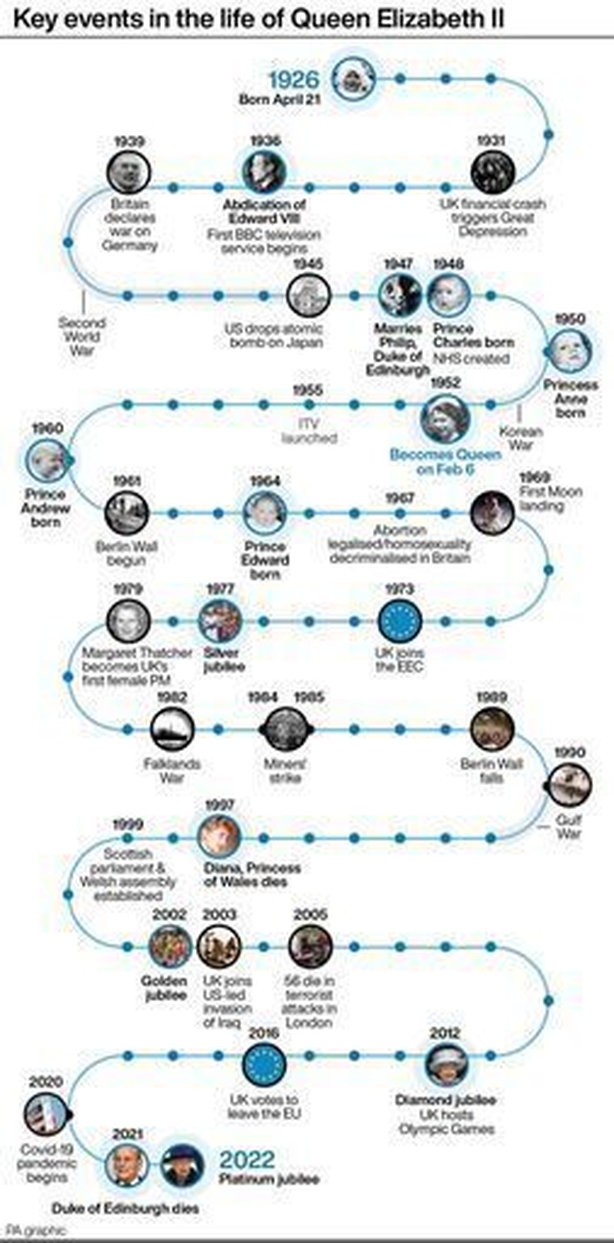
State visit to Ireland 2011
The queen's high-profile visit to Ireland was the first by a British monarch since the Republic of Ireland won independence in 1922.
An address in Irish, plus other symbolic gestures, helped galvanise reconciliation and cement the peace process in Northern Ireland, after years of conflict over British rule.
In 1993, President Mary Robinson met the Queen in London in the first meeting between the Irish and British heads of State.
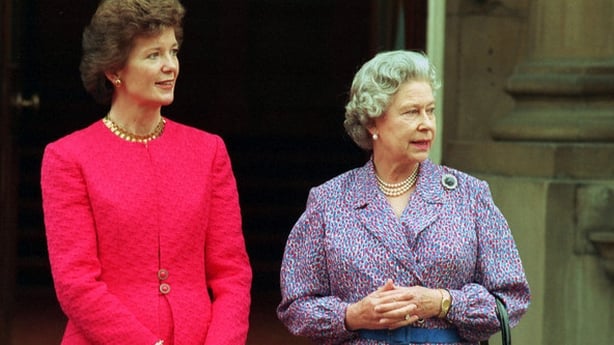
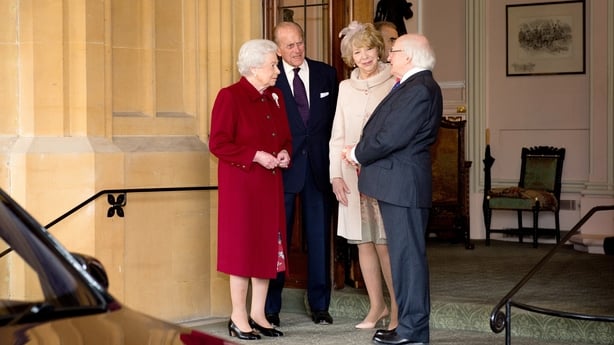
Rock of stability
Elizabeth spent an unscheduled night in hospital last October after undergoing unspecified tests.
Doctors have since advised her to rest and reduce her workload.
For support in fulfilling her duties, she has turned to her immediate family but one without two notable members - second son Prince Andrew and grandson Harry.
Andrew, often considered to be her favourite son, has been stripped of his royal functions due to his links to the convicted sex offenders Jeffrey Epstein and Ghislaine Maxwell.
Harry quit royal life in 2020 and moved to the US, from where he and his wife Meghan accused the family of racism.
Over the decades, the queen has been seen as a rock of stability in the turbulence of royal life.
In 1992 - a year she called her "annus horribilis" - three of her four children split from their partners, and Windsor Castle went up in flames.
But she faced criticism in 1997 for misjudging the public mood after the death of princess Diana in a Paris car crash, by initially refusing to return to London and fly the flag at half-mast over Buckingham Palace.
Even though she makes a recorded televised address every Christmas Day, she has never given an interview and is careful not to divulge her personal opinions.
As head of a constitutional monarchy, she is politically neutral, and her weekly private conservations with the prime minister of the day about current issues remain just that - private.
Jubilees chronicle changing times in Britain
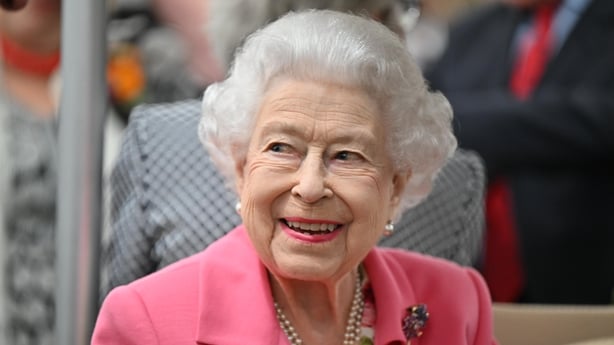
Queen Elizabeth II is the only British monarch to celebrate 70 years on the throne.
Her 1977 Silver jubilee festivities saw nationwide communal street parties.
Some one million people thronged central London to see the monarch during a carriage procession and she and her husband Prince Philip travelled an estimated 90,100km, visiting Commonwealth countries around the world.
Street parties again featured in a four-day-long weekend in June 2002 for the Queen's Golden jubilee.
A Buckingham Palace garden pop concert in front of 12,000 people was crowned by Queen guitarist Brian May playing the national anthem on the roof, as a million people filled the streets outside.
Besides a three-month tour of Britain, the Queen also visited Jamaica, New Zealand, Australia and Canada.
The 2012 jubilee came in the same year that London hosted the Olympics and Paralympics.
The 2-5 June celebrations saw a river pageant, beacons lit, a thanksgiving service and a pop concert.
An estimated 1.2 million people lined the riverbanks to watch the largest flotilla on the Thames in 350 years.
An estimated 8.5 million people took part in Big Jubilee Lunch gatherings, which replaced street parties.
Queen Elizabeth II: record breaker
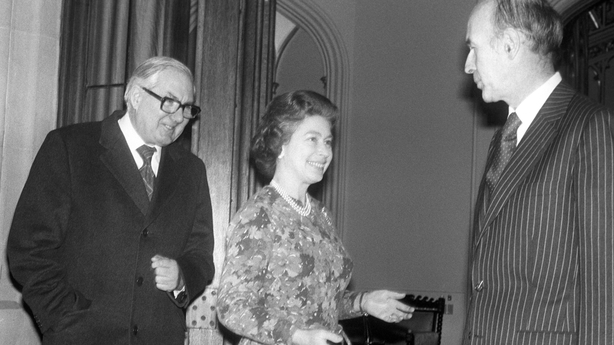
Queen Elizabeth II has notched up a number of landmarks in her record-breaking 70 years on the throne.
Globetrotter
The queen has travelled to more than 100 countries since 1952 - another record for a British monarch - and made more than 150 visits to Commonwealth nations.
She has been to Canada 22 times - more than any other country.
The Daily Telegraph calculated that she travelled the equivalent of 42 times around the world before stopping overseas trips in November 2015 aged 89.
Busy
As queen, Elizabeth II has carried out some 21,000 engagements, given royal assent to 4,000 pieces of legislation and hosted 112 state visits of foreign heads of state.
More than 180 garden parties have been hosted at Buckingham Palace, attended by more than 1.5 million people.
Cards
The queen has sent some 300,000 cards of congratulation to centenarians and more than 900,000 to couples celebrating 60 years of marriage.
She was married for 73 years - another record for a British monarch. Her husband, Prince Philip, died aged 99 in April last year.
Portraits
The queen has posed for more than 200 portraits since the age of seven. Most were painted in a traditional style.
Pioneer
In 1996, the queen became the first British monarch to visit mainland China in 1991.
She was also the first to address the House of Representatives in Washington.
Longevity
At 96, Elizabeth is the oldest current monarch and head of state in the world.
Only two kings have ruled for longer: France's Louis XIV - more than 72 years between 1643 and 1715 - and Thailand's Bhumibol Adulyadej - 70 years and four months, until his death in October 2016.

